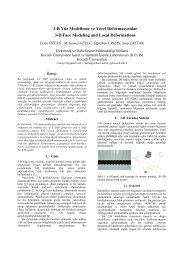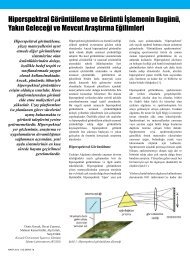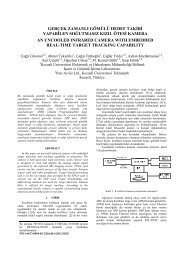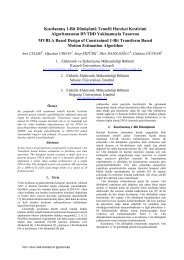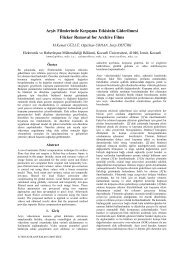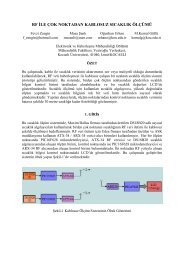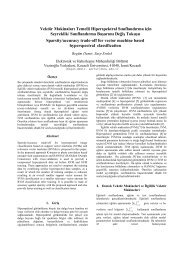READING BARCODES USING DIGITAL CAMERAS ... - KULIS
READING BARCODES USING DIGITAL CAMERAS ... - KULIS
READING BARCODES USING DIGITAL CAMERAS ... - KULIS
You also want an ePaper? Increase the reach of your titles
YUMPU automatically turns print PDFs into web optimized ePapers that Google loves.
a) Odd/Even Parity Table b) Encoding Table<br />
Figure 2: Encoding tables for the EAN 13 numbering system.<br />
As the first decimal number (for instance the first 9 in the barcode shown in Figure 1) shows<br />
the corresponding row of the odd/even parity table and is not encoded in the barcode, it<br />
cannot be extracted by identifying the thickness of vertical lines. In laser scanner systems,<br />
this number is obtained using parity calculation. For simplification, the parity calculation step<br />
is omitted in the proposed system, and both sides of the left-hand encoding approach shown<br />
in Figure 2b is entered into the database and the correct value is determined by comparing<br />
against both (odd and even parity) cases.<br />
Approach:<br />
Our approach contains an edge detection algorithm to obtain barcode borders from images<br />
acquired using a camera, and some threshold mechanism to process images as binary<br />
patterns.<br />
At first, an image that contains the barcode information is acquired using a camera. The<br />
color image contains in fact the full usable information. For faster and simple processing, the<br />
image is converted to grayscale format. Because the acquired image will typically contain an<br />
area larger than the barcode, it is initially required to crop the barcode area as the rest of the<br />
image is unnecessary.<br />
Because only the barcode region is required, the borders of the barcode line coordinates<br />
must be determined. An edge detection algorithm can be used for determining the borders.<br />
Edge detection algorithms can use different kernels. The Canny edge detector provides a<br />
reasonable and successful approach for edge detection [1]. The Canny detector uses two<br />
kernels, one for the vertical edges and one for the horizontal edges. The utilized kernels are<br />
shown in Figure 3. The Canny algorithm provides an optimal edge detector based on a set of<br />
838





![Page 1 %XODQÕN 6 ]JHo LOH *|U QW 6WDELOL]DV\RQX M ...](https://img.yumpu.com/18085529/1/184x260/page-1-xodqon-6-jho-loh-u-qw-6wdeloldvrqx-m-.jpg?quality=85)
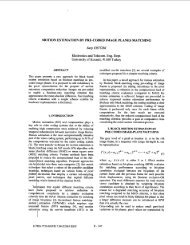
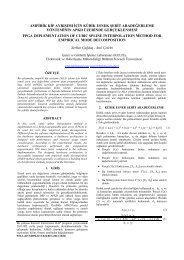
![[ ]T [ ]T - KULIS - Kocaeli Üniversitesi](https://img.yumpu.com/18085463/1/184x260/-t-t-kulis-kocaeli-universitesi.jpg?quality=85)
